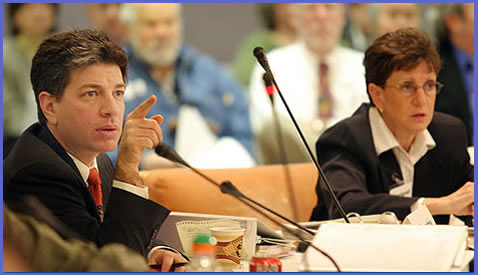| |
|
|
|
| |
 |

|
|
|
Oil Revenue

The debate about Alaska’s oil and gas revenues has been too much about short-term gain and not enough about long-term interests. The result is a system that fails to optimize outcomes for either the state or industry. Alaska can do better – we can have a system that reduces development risk, increases production and jobs, gives Alaska a fair share of the revenues, enforces budget discipline in Juneau, strengthens the Permanent Fund, and takes the politics out of the state's relationship with the oil industry. Doing better, however, requires a new approach.
Alaska receives oil revenue from two main sources – royalty (generally, the state’s 12.5% share from an oil field) and severance (the selling price for the oil “severed” from the state). Historically, debate has focused only on severance.
When the old severance method, ELF (Economic Limit Factor), faltered, Frank Murkowski replaced it with PPT (Production Profit Tax), followed quickly by Sarah Palin’s ACES (Alaska’s Clear and Equitable Share). Both PPT and ACES are essentially corporate income taxes, built around “net profits", and both captured revenue for the state during this recent time of high oil prices. But long-term, revenue depends on production as well as price, and we need a system that does a better job encouraging production.
That's why it's worth examining a "no severance, royalty-only" solution: eliminate ACES entirely and replace it with a field-by-field royalty structure.
Every broadly written tax code, including ACES, shoehorns all taxpayers and all ventures into a “one size fits all” tax system. A customized system recognizes the unique costs and challenges of developing individual leases. It provides the flexibility needed to accommodate the range of economics confronting various Alaskan oil and gas projects, spanning from heavy oil to natural gas, and from Cook Inlet to the North Slope. That flexibility will spur investment and development.
A 100% royalty solution more closely aligns the state’s interest in revenue and industry’s interest in production, and also features several significant attributes:
- Fiscal certainty for industry — royalty rates are contractual, negotiated between the state and the leaseholder, which insulates rates from legislative changes. A good contract protects both parties by containing “reopener clauses” to address changed circumstances in the future. In addition, by reflecting field specific incentives, ramp-ups, and individual field economics, a contract minimizes risk, increasing potential for development.
- Fiscal stability for the state – declining oil production seriously threatens the revenue stream needed to sustain state budgets, and the jobs and businesses that depend on development. And moving away from severance-based revenue gets state government away from boom-and-bust budgeting, and institutionalizes fiscal discipline.
- Grows and protects the Permanent Fund – the Constitution requires that 25% of all royalty (by statute, 50% for new fields) be deposited into the principal of the Permanent Fund. Under an all-royalty system, a portion of the money that now goes into the general fund would go to the Permanent Fund
It is also important to depoliticize implementation and management of the oil revenue system. That’s why a specifically designated, independent commission, one beyond the control of the governor and the legislature, should have responsibility for negotiating new leases, renegotiating existing leases and handling operations of the 100% Solution. As Alaskans know through our experience with entities like the Permanent Fund or the Board of Fisheries, elected officials should set policy, but in matters involving complex issues, the people of the state are better served when experts and professionals, not politicians, implement those policies.
Oil is so central to the state’s economy that basic responsibility compels on-going review of our revenue sources. Standing still in a changing world is a recipe for falling behind. Doing what we have been doing – relying on a net profit tax — is, at best, standing still, and does not adequately advance Alaska's competitiveness. In a post-recession economy, facing a rising global tide of demand for energy, it is not "more of the same," but bold innovation that will lead to a secure, independent future for Alaska.
|
|